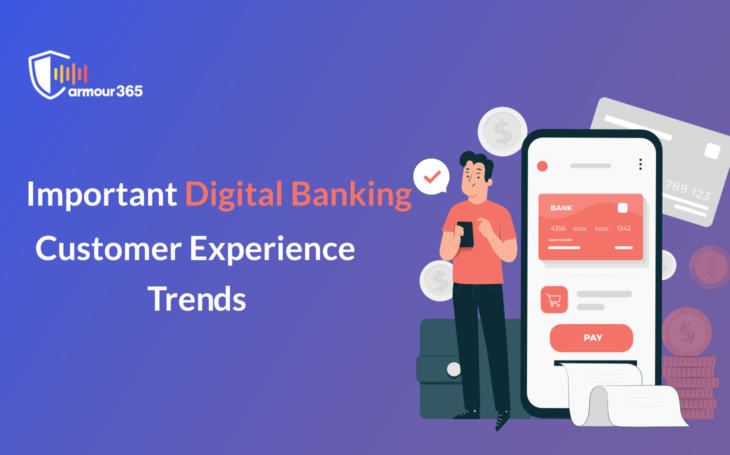
Digital banking is a competitive space with many new players bringing in game-changing innovations while veteran brands reinvent their processes and offerings. It is a domain where trust remains vital, and customer experience is a crucial pillar to achieving customer retention.
Good customer experience is a critical differentiator in the face of rising expectations. Online communities have become powerful tools for disgruntled customers. Conversely, a consumer-centric banking institution can establish new behavioral norms and make brand evangelists out of customers.
We will explore some of the important customer experience trends in digital banking that should be adopted quickly.
Regular and proactive engagement to educate customers
Digital banking has taken a firm turn towards empowering customers with all the financial knowledge needed to make informed decisions. Customers have all the information they desire at their fingertips and like to know the rationale behind the bank’s actions and decisions.
Engaging customers with regular and timely information helps them make appropriate decisions with the best offers to grow and secure their wealth. It increases trust in the institution. When banks make customers a part of the financial management plan, they also reduce the risks.
Investing in good quality educational materials, placing FAQ bots and product recommendation bots at the right stages, sending reminders about payments, billing, policy changes, and regular surveys not just for CSAT are some things that can be done.
Omnichannel Live Assistance
The digital transformation has introduced tools to eliminate the most considerable frustrations experienced by customers. Nearly 50% of customers have become so familiar with banking apps that they like to open accounts this way.
Chatbots and voicebots are becoming indispensable in the modern digital banking customer experience Trends. Long call waiting times, transfers to multiple agents, and unavailable expert help are among the top negative experiences these virtual assistants help decrease. Also, invest in a social media presence since many customers prefer it as a customer support channel.
These adoptions help to offer 24/7 support but without taxing human agents. It’s an overall win since human agents can stop performing repetitive mundane tasks that should be automated.
Collect and use big data and omnichannel analytics
Understanding customers thoroughly is necessary for providing a truly seamless omnichannel experience. The advent of big data and advanced analytics makes it easier than ever. Adopting them also reduces costs and helps with meeting compliance, auditing, and reporting requirements.
Using data to segment customers and reduce risk by evaluating their creditworthiness effectively will improve digital banking customer experience trends. You can also target them better for cross-selling and upselling opportunities. Big data and omnichannel analytics also have massive utility in cybersecurity.
Improve cybersecurity without inconvenience by adopting Voice Biometrics
The number one reason people continue to trust digital banks with money is that it stays safer with them. Today, fraudsters and cybercriminals are trying to get smarter than ever and stay on top of security measures designed to foil them. Adopting the latest ways to keep customer data and accounts safe from hacking is imperative.
Traditional authentication methods based on PINs and passwords are prone to be forgotten.
Biometrics is one great solution. Physical biometric authentication methods based on fingerprints and iris scans suffer from the drawback of portability, and that is where voice biometrics can step in.
Voice authentication is contactless and can be done remotely. It can also be added to the regular extra safety process and give customers more options. These benefits improve the ease of making transactions.
Offer Personalized CX Journeys
As millennials and succeeding generations are forming a more significant proportion of the customer base, over 70% of them expect to see personalization in their customer journeys. More than 90% of customers report finding personalized messaging very appealing.
Personalization can also include multi-language support (even for voice biometrics and voicebots), sending in messages at important milestones, and identifying the right product fit.
Incorporate technological innovations like contactless, cardless payments when they happen, especially if there is a high chance of personalization.
Nowadays, many tools support third-party integrations, making it easier for banks to collaborate in offering a supreme customer experience. Artificial intelligence is making huge inroads because it simplifies this process. As banks face new-age opportunities (and challenges), they should strive to stay at the forefront of modernization.




